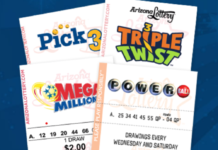
The temptation to eat a cookie does not start with the actual decision to take a bite.
First, it starts as hunger. It could be physical hunger, emotional hunger, maybe even spiritual hunger.
That hunger leads to a desire for sweet sensations.
That leads to the identification of a cookie as the object of desire.
Still, at this point, no temptation has been coddled—or has it? Is the seeking of sweets or the objectifying of cookies the point where temptation leads to consumption?
More steps must be taken.
At this point, there is an internal dialogue, full of LIES.
I will make them for the kids. Smelling them will be enough.
One cookie does not a diet break.
I can eat just one.
I won’t even lick the spoon.
I can have them in the house and control myself.
The chocolate is good for me, for the soul, for the heart.
If I eat the cookie, I will no longer be hungry or craving sweets.
If I eat the cookie, I will be happier.
No one has to know…
Then, after the lies comes a decision to consume the cookie. That requires acquisition and preparation.
You must get out the bowl, heat up the oven, pull out the ingredients (assuming you have them at home), make the dough, put the cookies on the sheet, bake them—around 100 steps of acquisition which were consciously made, each one a reaffirmation of the decision to eat the cookie.
Of course, the cookies have to be good, homemade cookies. Who wants cheap, easy, stale cookies? No, if you are going to have a cookie, having a good cookie makes it somehow less of a cheat.
Then, we wait. There is no buyer’s remorse in cookies. We consider our decision for 30 minutes while the cookies bake and rise, the smell filling the house. Whether we want others to know of our decision or not, the evidence is all around us—the prep materials, the missing resources, the smell of cookies, the fact that due to the decision to fill the hunger with cookies, other solutions are not being sought.
Then, the cookies come out. They must cool. We look at them. We see our readied treat…
Yet the decision to consume still is reversible. You can still go back from here. Give them to a neighbor; get them out of the house!!
Do you pick it up, take a bite, and swallow?
How many steps led to the cheating? How many micro-decisions led to the cookie? How did that cookie impact the hunger? How did that cookie make anything better?
That thinly veiled metaphor is why affairs don’t just happen. Cookies don’t fall into our mouths. They take decisions and prep. So if you don’t want to cheat, don’t get hungry. Don’t crave sweets… because the further you are in the decision-making process, the more committed you become to actually eating that cookie.
Kristi Cesare is a Maricopa resident and a regional distributor for No Mother Left Behind, a charity focused on getting free slings for mothers in need.
Submitted photo
InMaricopa.com runs, on a regular basis, opinion pieces submitted by community members. The following article is the opinion of the author, and does not necessarily reflect the views of InMaricopa.com. Have an opinion you’d like to share with Maricopa? Please email it and any applicable photos to [email protected] for consideration.










![Alleged car thief released without charges Phoenix police stop a stolen vehicle on April 20, 2024. [Facebook]](https://www.inmaricopa.com/wp-content/uploads/2024/04/IMG_5040-218x150.jpg)




